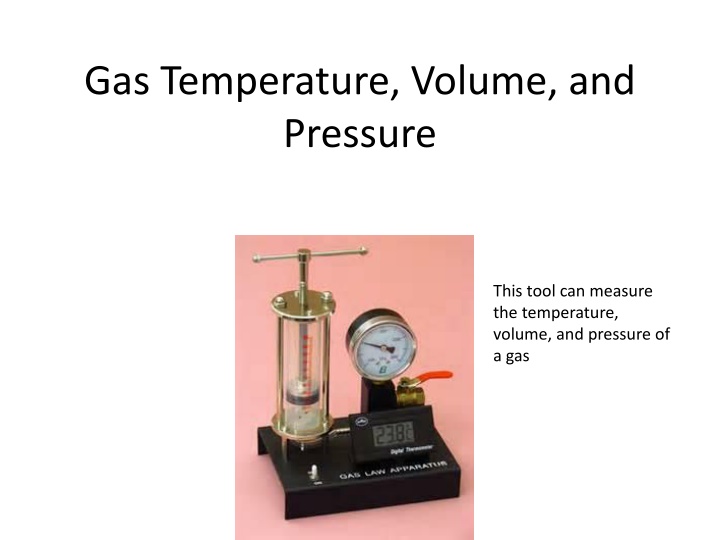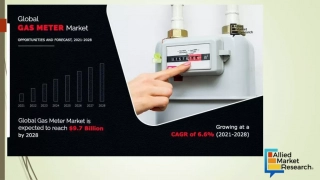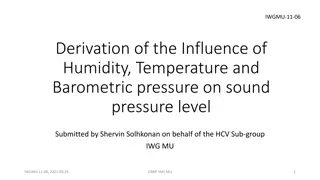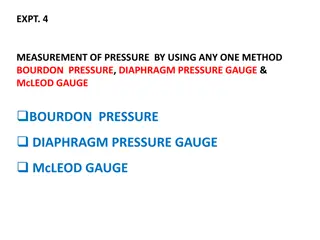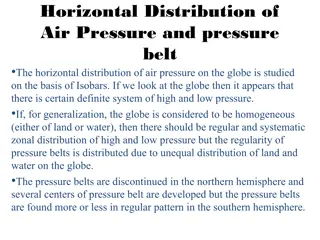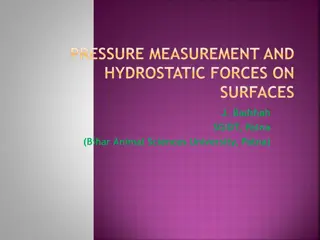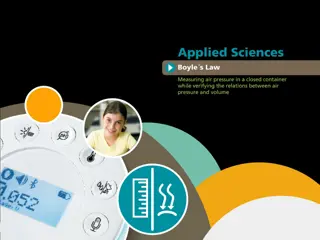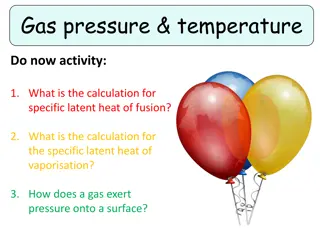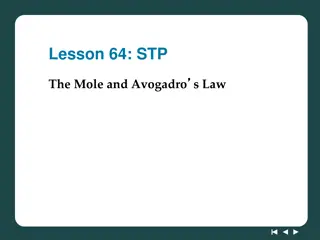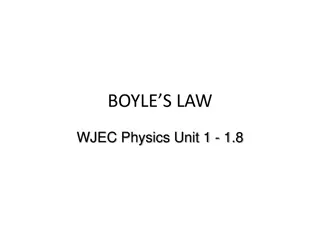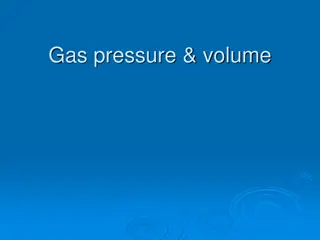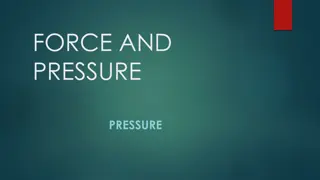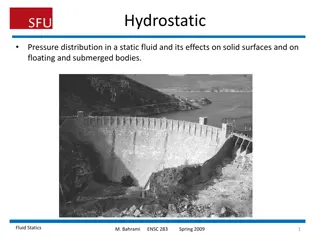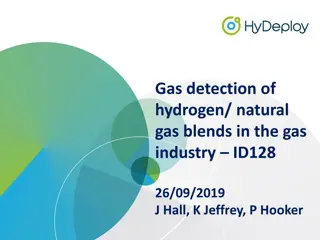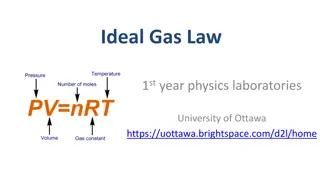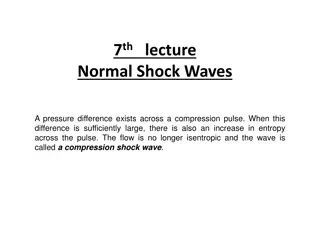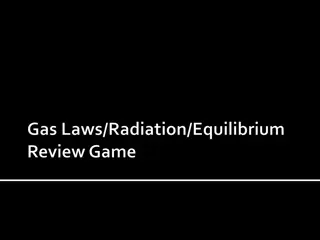Gas Temperature and Pressure
This comprehensive guide delves into the concepts of gas temperature, volume, and pressure. Explore the fundamentals of temperature measurement, the Kelvin temperature scale, absolute zero, Boyle's Law, Charles's Law, and the Ideal Gas Law. Discover how these principles govern the behavior of gases in various conditions.
Download Presentation

Please find below an Image/Link to download the presentation.
The content on the website is provided AS IS for your information and personal use only. It may not be sold, licensed, or shared on other websites without obtaining consent from the author.If you encounter any issues during the download, it is possible that the publisher has removed the file from their server.
You are allowed to download the files provided on this website for personal or commercial use, subject to the condition that they are used lawfully. All files are the property of their respective owners.
The content on the website is provided AS IS for your information and personal use only. It may not be sold, licensed, or shared on other websites without obtaining consent from the author.
E N D
Presentation Transcript
Gas Temperature, Volume, and Pressure This tool can measure the temperature, volume, and pressure of a gas
What is temperature? All particles in all things are moving at all times, but some faster than others Temperature measures the average speed of the particles in something Some of the particles move faster or slower than the average, as shown in this diagram
Kelvin Temperature Scale The Kelvin scale of temperature (K) is just like the Celsius scale ( C), 0 K is absolute zero. 0 K=-273 C The Kelvin scale, not the Celsius scale, is used when doing math problems This picture shows how the Celsius scale is related to the Kelvin scale
Absolute Zero Temperature Absolute zero (0 K) is the coldest possible temperature. It is the temperature at which all movement stops Scientists have made temperatures very close to absolute zero, but it is thought that absolute zero can never be reached Absolute Zero is much colder than this
Review Boyles Law Boyle s Law shows how the pressure of a gas changes with volume (or volume with pressure) P1V1=P2V2 http://upload.wikimedia.org/wikipedia/commons/thumb/1/15/Boyles_Law_animated.gif/300px-Boyles_Law_animated.gif
Charless Law Charles s Law shows how the volume of a gas changes with temperature (or temperature with volume) V1 V2 T1 T2 = http://upload.wikimedia.org/wikipedia/commons/thumb/e/e4/Charles_and_Gay-Lussac%27s_Law_animated.gif/300px-Charles_and_Gay-Lussac%27s_Law_animated.gif
Question: The pressure does not change. 2 L 200 K 10 L 1000 K What is the final temperature?
The Ideal Gas Law The Ideal Gas Law combines Boyle s Law, Charles s Law, and the number of particles (atoms or molecules) into one equation (Ideal means perfect ) P1V1 P2V2 (n is the number of particles) n1T1 n2T2 =
Ideal Gas Law Assumptions An assumption is something taken as true in a certain situation The Ideal Gas Law assumes a few things about the particles in a gas These assumptions are usually very close to being true, but are never completely true That s why it s called the Ideal Gas Law instead of the Real Gas Law
Question: You are at the top of a mountain where the pressure is 0.5 atm and the temp. is 200 K. You put 2 L of air into a balloon and then take it down the mountain. Along the way, half of the air leaks out of the balloon. At the bottom of the mountain the pressure is 1 atm and the temp. is 300 K. What is the new volume? Answer: 0.75 L
